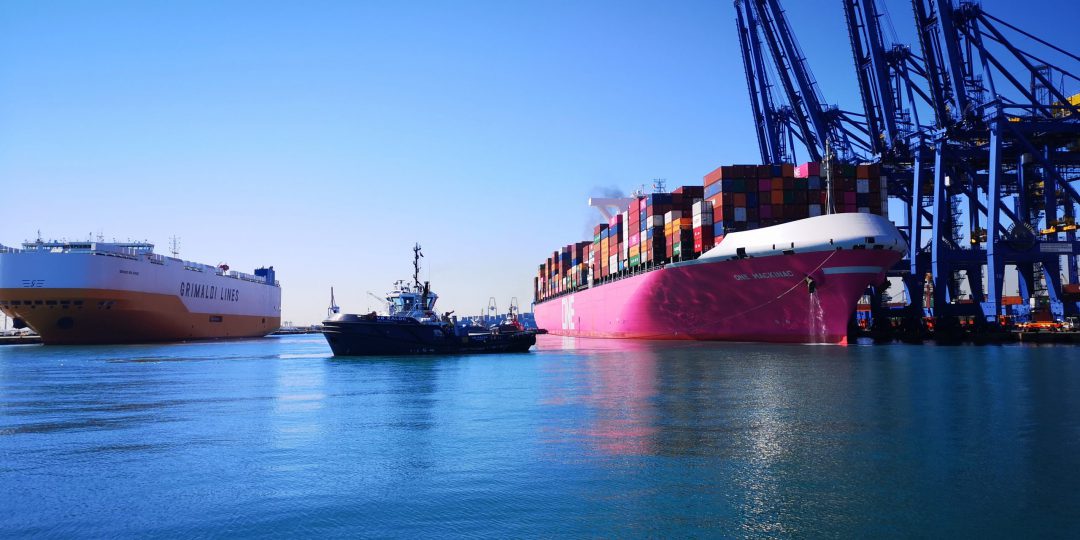The Valencia Containerised Freight Index, the indicator that measures the trend and evolution of container transport costs by sea from the Port of València, begins the year 2022 with a value of 4,267.75 points, which represents an increase of 4.9% with respect to the month of December. Once again, the growth in demand for maritime transport, the price of fuel and congestion in ports in the United States and China are factors that influence the increase in the Index in January.
The cost of fuel, because of its influence on the operating prices of shipping lines, is a determining factor in the evolution of freight rates. The European Brent crude oil barrel has increased by 16.63% from 74.17$ in December to 86.51$ in January. Bunkering is moving along the same lines. According to data provided by Ship&Bunker, the price of IFO 380 has risen from $480.50 in December to $557.50 in January, which represents an increase of 16.02%. Likewise, VLSFO reached $706 in January compared to $633.50 in December, an increase of 11.44%.
On the demand side, the latest RWI/ISL Container Throughput Index report indicates a significant increase in port traffic, mainly explained by the stimulus packages fuelling US consumer demand. In contrast, container throughput at Chinese ports has fallen due to the Lunar New Year, which slows down activity in China. In addition, this year also sees the addition of the Beijing Winter Olympics.
The capacity offered by shipping lines remains high for all vessel segments, with commercially idle fleet levels at minimum levels, according to Alphaliner. Specifically, 46 vessels were idle in mid-January, with a total of 117,178 TEUs (standard 20-foot container) representing 0.5% of the total active fleet, showing a slight decrease from the year-end 2021, when 48 containerships were idle, with a total of 149,386 TEUs.
Congestion problems continue
Another factor to note in the evolution of the VCFI in recent months is port congestion, which shows no sign of improvement in global terms. Thus, the Chinese ports of Ningbo, Zhuhai, Tianjin and more recently, Beijing and Shanghai, have been particularly affected by the “Zero COVID” policies imposed by the Chinese government following the appearance of the Omicron variant, which has led to closures. Similarly, and according to the terminal congestion index drawn up by SeaIntelligence, bottlenecks persist in the Port of Los Angeles and Long Beach with high waiting times for ships.
As for the analysis of the different areas that make up the VCFI, the increase has been the general trend in all of them. Of note is the increase in the Baltic States (23.78%) and Atlantic Europe (15.91%), regions in which the geopolitical tensions between Russia and Ukraine are affecting all the surrounding countries. In the rest of the zones, the increases in Latin America Pacific (10.36%), Central America and the Caribbean (7.22%), Africa East Coast (4.46%), USA and Canada (2.94%) and the Far East (2.25%) should be highlighted.
VCFI Western Mediterranean
As for the Western Mediterranean sub-index, growth has moderated, registering a variation of only 0.49% with respect to the previous month, to reach 2,127.62 points. During 2021, the index has concentrated the largest increases since the beginning of the series, although the data of the last few months seem to point to a certain containment, which should be confirmed in the coming weeks. This trend in 2021 is part of a context of continued increase in traffic from Valenciaport to Morocco and Tunisia, surpassing the levels reached in 2019 and 2020.
VCFI Far East
In the Far East area, the Index stands at 3,827.12 points, 2.25% more than in December, and accumulating a growth of 282.71% since the beginning of the VCFI. In this line, an increase in Valenciaport’s export flows with China, its main trading partner, can be observed. Once again, it is necessary to consider the seasonality of the moment, marked by the proximity of the Chinese New Year, which could be increasing the global export chains to the Asian giant. This also translates into greater pressure on freight rates.

























